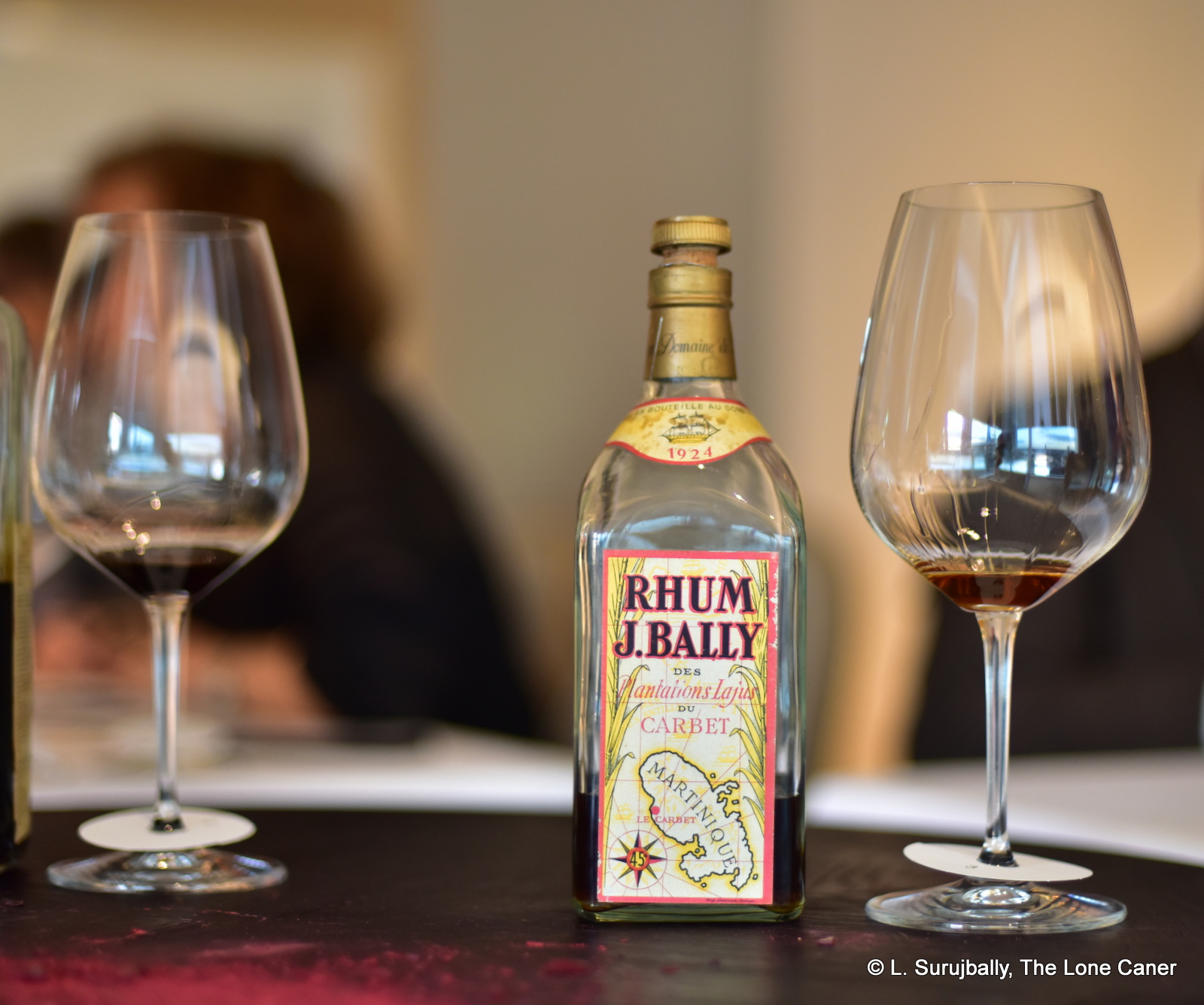
Few are unaware of the existence of the J. Bally 1929 – for those who troll the online shops it remains one of the few very old bottlings from inter-war Gilded Age times to remain available…if one has over two grand kicking about to buy it.The Bally 1924, on the other hand, is a whole lot rarer – I can’t remember the last time I saw one coming up for discussion, let alone sale. And one could argue that its heritage is much more gold-plated – it’s the first vintage from J. Bally. I’ve tried quite a few from this bottler, one dating back to the 1960s, but to try the very first? That might be worth a kidney right there.
This bottle being such a piece of heritage, a little history is in order. J. Bally was named after Jacques Bally, a graduate of a top engineering school in Paris, the Ecole Centrale des Arts et Manufactures (ECP, founded in 1829) – he snapped up the Lajus Plantation on Martinique in 1917, a mere fifteen years after Mount Pelee erupted, when memories of that disaster were still fresh and land prices were cheap (Lajus, founded in 1670, was already in foreclosure, having gone bankrupt after the 1902 disaster). By 1920 he had installed new steam engine, fixed up the salvageable equipment he could and (legend has it) pretty much built his own column still from scratch. In that same year the nearby Habitation Dariste owned by the the Gronier family went bankrupt and Bally bought it in 1923 and moved the distillery equipment to Lajus to augment his own machinery. In 1930, by which time he was already laying away rum stocks to age, he also had a hand in designing the signature pyramidical and square bottles which became so associated with Bally in later years. The rhums Bally made were very popular, sold well, and the company remained in business until the 1980s when Remy Cointreau acquired it, at which point production was shut down at Lajus and moved to Domaine du Simon where (as far as I know), it’s still being made, with cane from Lajus. Note that in 2003 La Martiniquaise bought out Saint James and Bally (to add to their rum portfolio which already contained the brands of Depaz, Dillon, Negrita and Old Nick) which is why the Remy Cointreau’s webpage makes no mention of either one now.
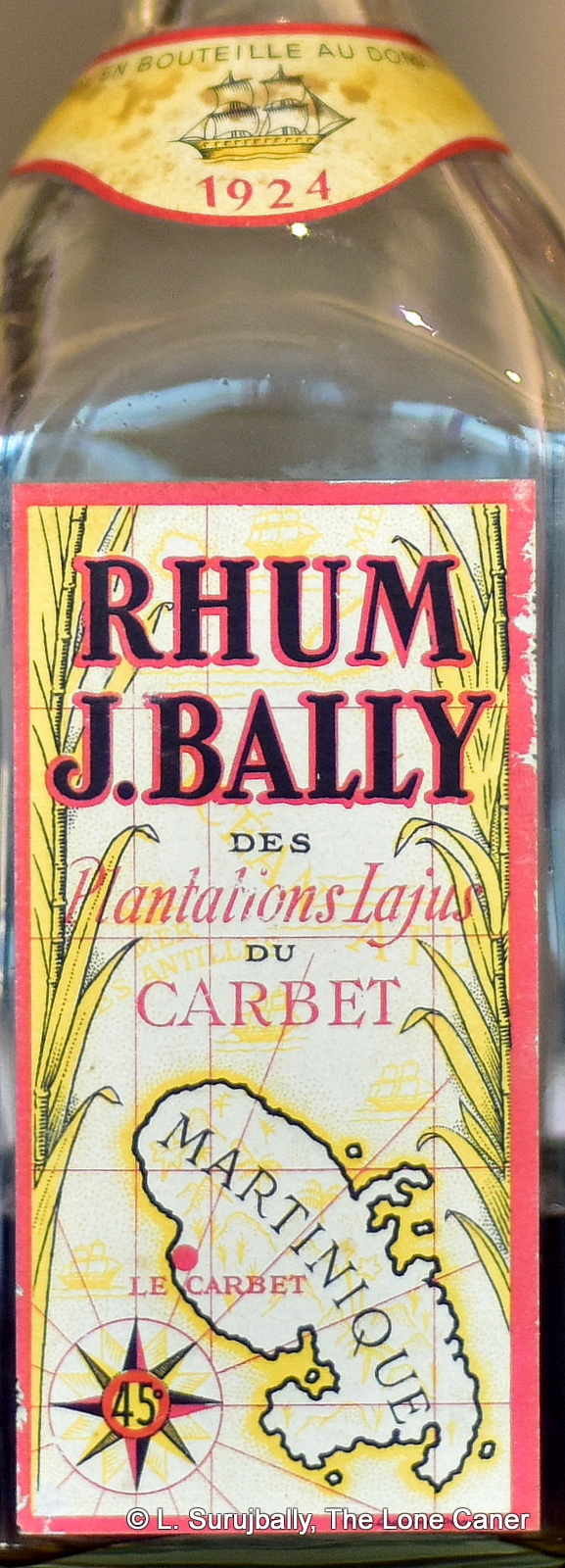 Aside from being made so long ago, what makes the 1924 special is that it was the initial release of an aged rhum from Bally, and one of the first of its kind in the French West Indies, if not the first. Jacques Bally took inspiration from cognac and eau-de-vie makers in France and was apparently the first to consider ageing Martinique rhums in oak. This provided the initial release of his rums in the 1920s with a depth of quality that made them extremely popular and well-known, and one can just imagine all the other distilleries on the island rushing to copy the idea. The inevitable question arises, how old is the 1924 vintage? “More than six years,” said Luca Gargano in a text to me, and that makes sense if the bottle that houses it was only designed and made in 1930. We can leave it there with only one other great unknown, and that’s how many bottles were released – and nobody knows that any longer, sorry. I hit a brick wall on that one.
Aside from being made so long ago, what makes the 1924 special is that it was the initial release of an aged rhum from Bally, and one of the first of its kind in the French West Indies, if not the first. Jacques Bally took inspiration from cognac and eau-de-vie makers in France and was apparently the first to consider ageing Martinique rhums in oak. This provided the initial release of his rums in the 1920s with a depth of quality that made them extremely popular and well-known, and one can just imagine all the other distilleries on the island rushing to copy the idea. The inevitable question arises, how old is the 1924 vintage? “More than six years,” said Luca Gargano in a text to me, and that makes sense if the bottle that houses it was only designed and made in 1930. We can leave it there with only one other great unknown, and that’s how many bottles were released – and nobody knows that any longer, sorry. I hit a brick wall on that one.
Enough of the pedantic stuff. How was it to taste, eliminating all the baggage of history and heritage and rarity the rhum came with? It’s one thing to sing high praises because it’s from so far back, but a cold review is somewhat more challenging, especially considering the august company in which I tried it – the Tasting of the Century in September 2018. You can bet that I was paying real close attention and took a long time with my glass on this one, if only so I wouldn’t be embarrassed when real writers came out with their own notes.
Nose first: nice! For all its age, the Bally 1924 could have come off the line last year and you’d never know it. It smelled of fresh squeezed apple juice, pears with oodles of sweet light aromas, flowers, sugar water and watermelon, out of which emerged a nice melange of crushed walnuts, fanta, lemon zest, crisp yellow mangoes and cumin. If you were tasting it blind you’d swear this was an agricole you could pick up online for some reasonable coin – like the Harewood 1780, it presented a profile not a hundred miles removed from something produced today.
Bottled at 45% ABV, the Bally 1924, for all the noble pedigree granted by being made so far back, in many ways resembled Bally rhums from past decades’ that I went through three years ago. It was slightly sharp on the palate, and as clean and clear as any of its descendants. Apples, cider, brine and olives came smoothly off the assembly line, bolted on to emergent flavours of pears in syrup, green grapes, spices, more lemon zest, leather, a touch of vanilla and nougat and a vague hint of grass, black tea, earthy musk, and rosemary. The overall balance, cleanliness of the mouthfeel was excellent, and the ageing had definitely sanded down any rough edges – it was quite simply a pleasant drink to have, fading easily into a smooth finish that provided little that was new, just a languorous recap of the highlights – peaches, pears, mangoes, lemon zest, watermelon and sweet flowers and herbs and a pinch of cumin. A neat and near-perfect little agricole, coming together beautifully.
Well. How to score something like this? Well, I’m going to give it a solid endorsement — not that this means anything given its mythical near-unicorn status. But I should note in passing that for all its quality, the Bally 1924 strikes me more as an essay in the craft of agricole than a completely finished product that stands the test of time. It shows what they were before the snapped into focus in the last few decades of the AOC regs.
Perhaps it’s unfair to rate a rhum made nearly a hundred years ago to the standard of today when so much has changed in the interim — and for sure others around the table that day loved it (Matt rated it as his personal favourite for the evening). To round things up: the Harewood 1780 presented a startlingly modern profile that went in its own brilliant direction way, strong, forceful, distinct; the Skeldon 1978 couldn’t rise above its elder brother but was still quite an amazing drink; and the Saint James 1885 was a rum made in a style quite different from agricoles as a whole, unique and interesting. The Bally is caught in a limbo between the modern versions of the spirit, and the old ways of the 1885 – that’s in no way a failure, just that the competition is more fierce because we’ve had so many rums that are so similar to it.
But you know, whatever the score, there’s a certain cachet, even honour, in having been able to try a quartet of such grail-quest rums, so old, so rare, so absolutely stinking of rum history, so generously shared. The Tasting of the Century might one day be exceeded (though I can’t for the life of me imagine what rums would comprise version 2.0); but whether that happens or not, I’ll always be happy to have tried the Bally — because it was one of those rhums that pointed the way to the modern era of cane juice rhums, so exactingly made, so proudly issued, so excellent to drink. The Saint James 1885 might be the doddering grandaddy of the French island rhum style, but the 1924 with its crisp and clear profile taking us back to the beginning of the modern era, is surely its godfather.
(#552)(86/100)
Other Notes
- Links to other articles on the Rum Tasting of the Century (to be updated as other bits and pieces appear):
- Rum Diaries Blog event narrative.
- Cocktail Wonk write up of the evening
- Marco Zucchetti for WhiskyFacile reviews the rums: Part 1 and Part 2 (Italian only)
- Velier home page press roundup
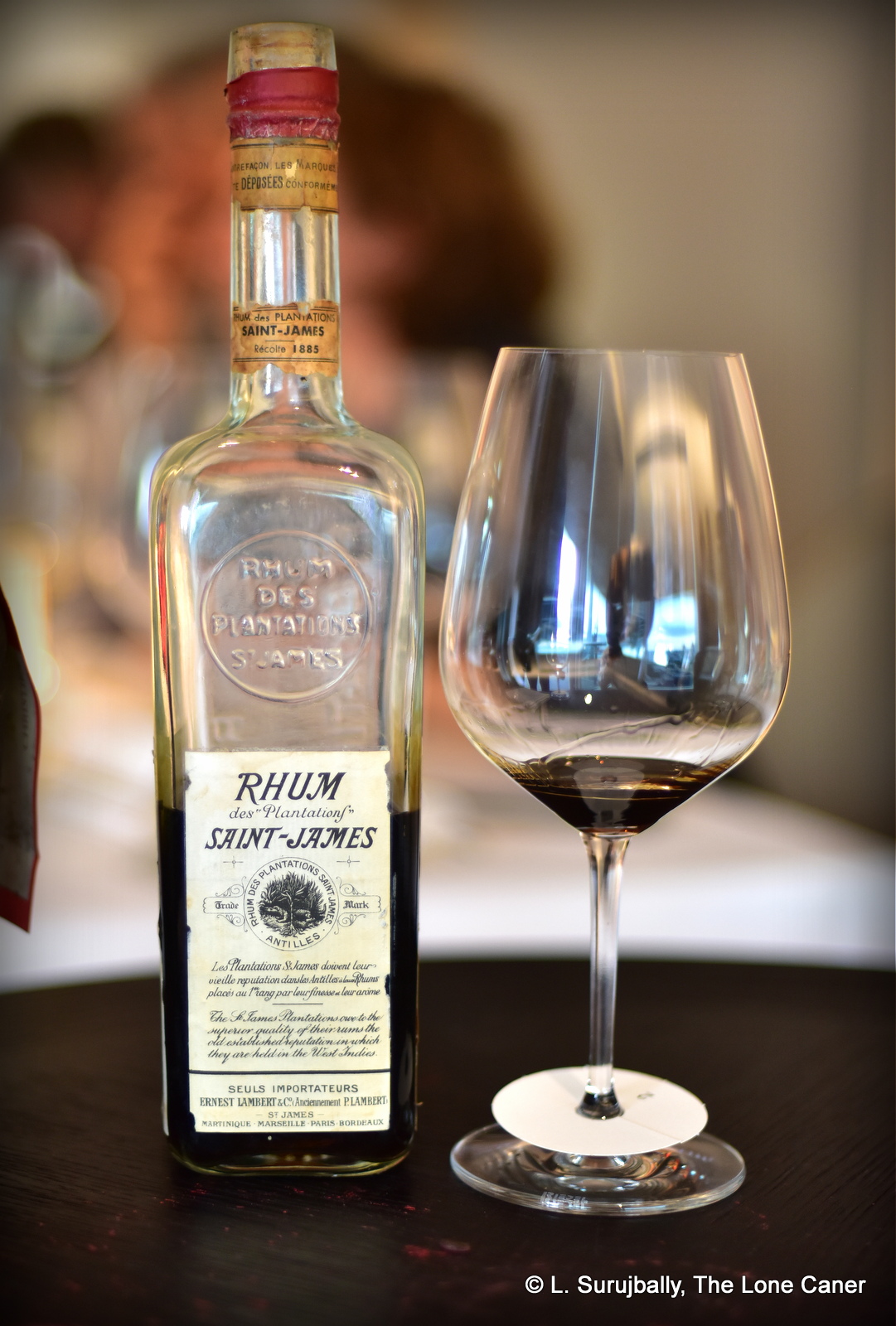
 Still, we had to get facts, and a lot of our preliminary conversations and subsequent texts and messages revolved around the data points, which are as follows: the rhum was made in 1885 on Martinique, and derived from cane juice that was boiled prior to fermentation. Although the exact age is unknown, it was certainly shipped off the island before Mount Pelée erupted in 1902 and destroyed all stocks there, so at an absolute maximum it can be 17 years old. This is, however unlikely – few rums or rhums were aged that long back then, and the opinion of the master blender of St James (Mark Sassier) that it was 8-10 years old is probably the best one (
Still, we had to get facts, and a lot of our preliminary conversations and subsequent texts and messages revolved around the data points, which are as follows: the rhum was made in 1885 on Martinique, and derived from cane juice that was boiled prior to fermentation. Although the exact age is unknown, it was certainly shipped off the island before Mount Pelée erupted in 1902 and destroyed all stocks there, so at an absolute maximum it can be 17 years old. This is, however unlikely – few rums or rhums were aged that long back then, and the opinion of the master blender of St James (Mark Sassier) that it was 8-10 years old is probably the best one (

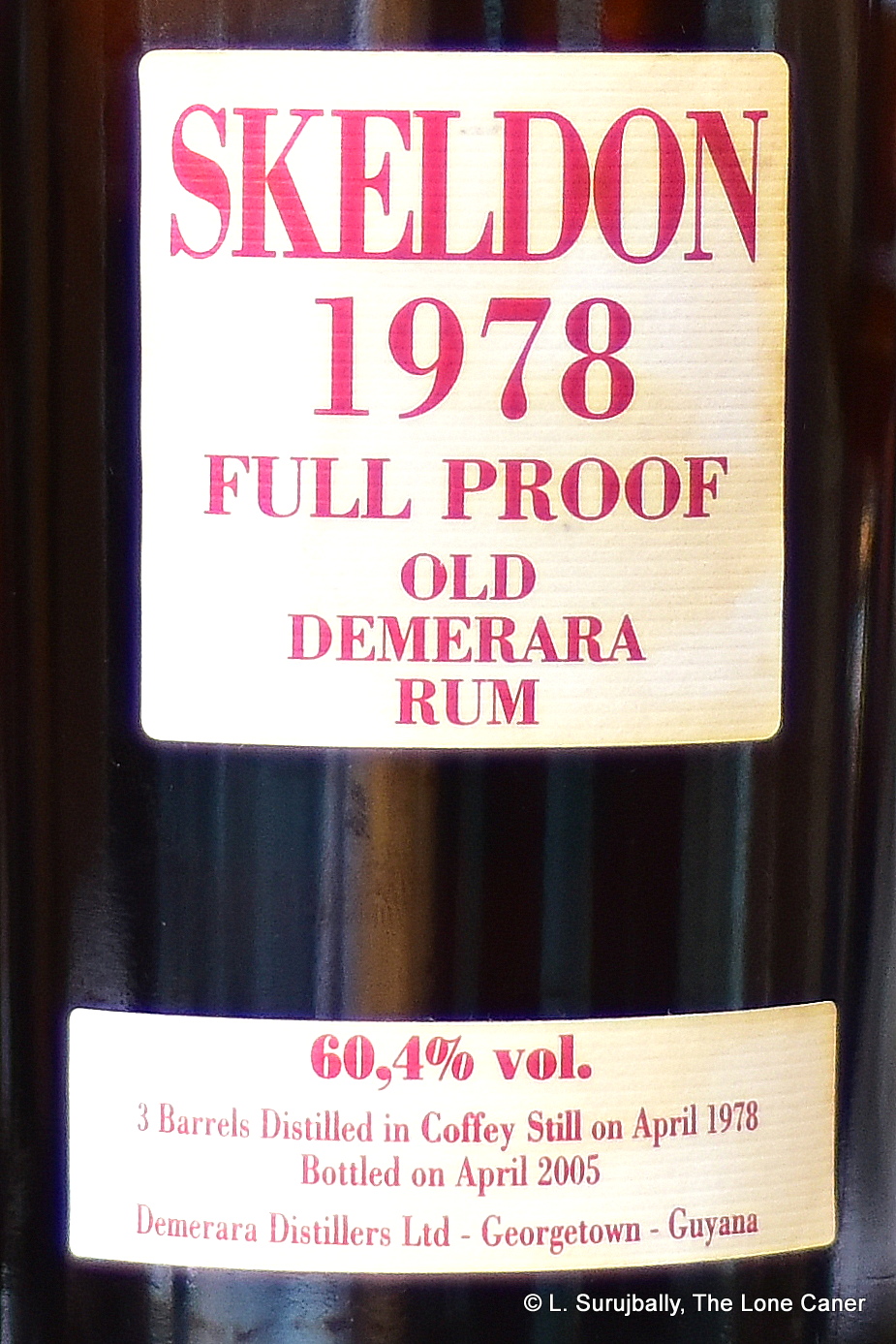 The history of the Skeldon 1978 bottling from a long-dismantled Savalle still is an odd one: the plantation is on the far eastern side of Guyana and the distillery has been shut down since 1960, though the original sugar factory’s remains continue to moulder away there, now replaced by a modern white elephant. It’s possible that the Savalle still which made it was taken elsewhere (Uitvlugt is the unconfirmed suspect) and this distillate hails from there rather than Skeldon — but certainly the “SWR” barrels ended up at Diamond, where Luca saw them gathering dust in the warehouse and convinced Yesu Persaud (the chairman of DDL at the time) to part with them. The 4-barrel 544-bottle outturn of the
The history of the Skeldon 1978 bottling from a long-dismantled Savalle still is an odd one: the plantation is on the far eastern side of Guyana and the distillery has been shut down since 1960, though the original sugar factory’s remains continue to moulder away there, now replaced by a modern white elephant. It’s possible that the Savalle still which made it was taken elsewhere (Uitvlugt is the unconfirmed suspect) and this distillate hails from there rather than Skeldon — but certainly the “SWR” barrels ended up at Diamond, where Luca saw them gathering dust in the warehouse and convinced Yesu Persaud (the chairman of DDL at the time) to part with them. The 4-barrel 544-bottle outturn of the 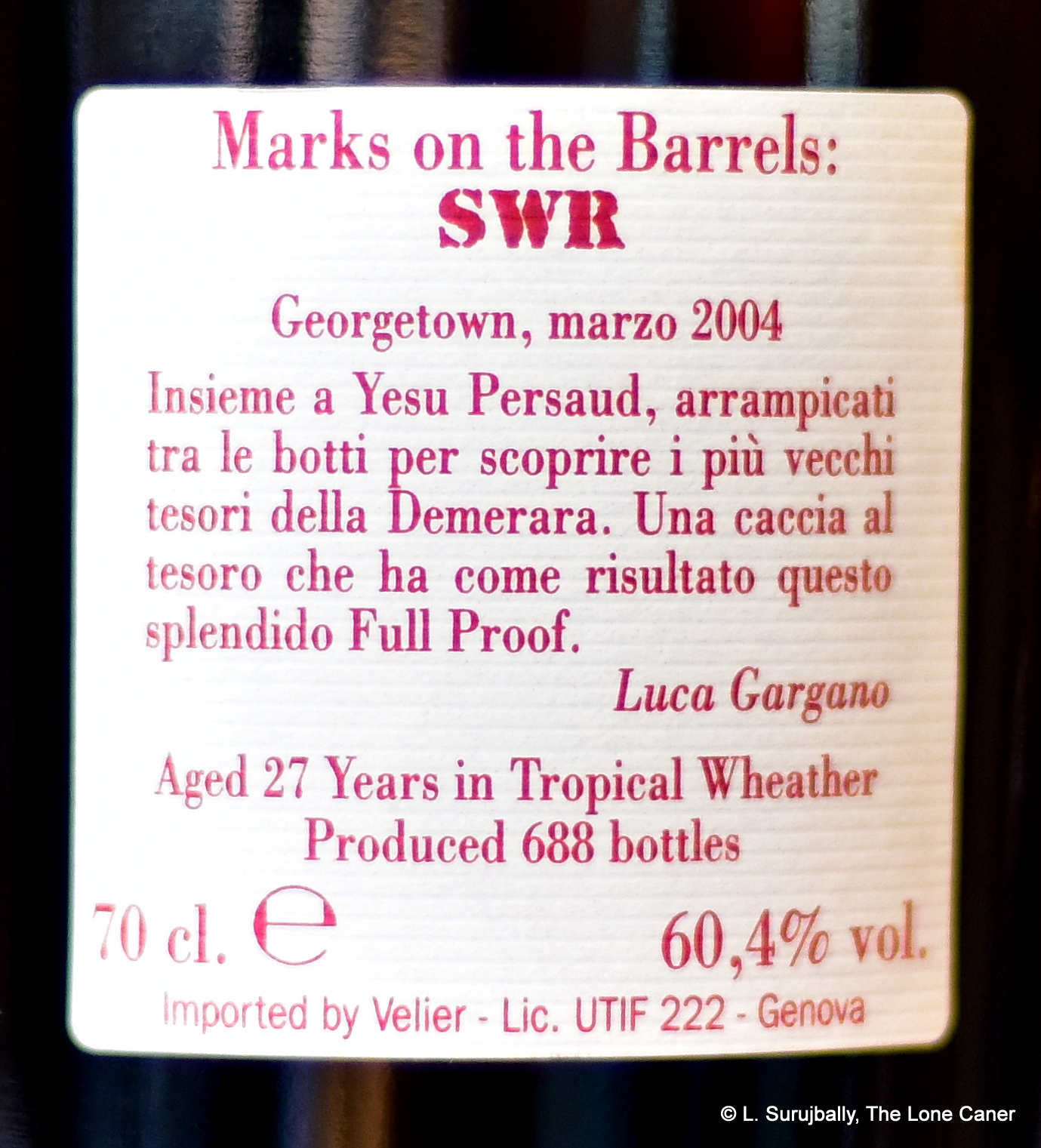 Although things at the Tasting were going faster than I was able to write (and listen), this was not a rum I wanted to be hurried with after waiting so long, and certainly it’s one with which to take one’s time. It unfolded gradually on the tongue, almost languorously and even at 60.4%, it was amazing how entirely under control it remained the entire time. Most of the tastes in the nose carried over, primarily anise, coffee and bitter chocolate, oranges, strong black tea, cumin, and that lentil soup / beef broth meatiness I remarked on earlier. But there were also more muted, subtler hints of papaya and fleshy fruits, aromatic tobacco, flambeed bananas and salty caramel. A rather dry note of over-roasted nuts came into play at the back end, a slight indeterminate bitterness (something like a manager who can never compliment your work without a closing criticism), but fortunately the muskier fruit and creamy notes ameliorated it for the most part. And while the finish was more a last bow on the stage than a true epilogue that added a few extra fillips of flavour, it was in no way disappointing, leaving me with a memory of coffee, nougat, salt caramel ice cream, fruits, raisins, licorice and light chocolate oranges.
Although things at the Tasting were going faster than I was able to write (and listen), this was not a rum I wanted to be hurried with after waiting so long, and certainly it’s one with which to take one’s time. It unfolded gradually on the tongue, almost languorously and even at 60.4%, it was amazing how entirely under control it remained the entire time. Most of the tastes in the nose carried over, primarily anise, coffee and bitter chocolate, oranges, strong black tea, cumin, and that lentil soup / beef broth meatiness I remarked on earlier. But there were also more muted, subtler hints of papaya and fleshy fruits, aromatic tobacco, flambeed bananas and salty caramel. A rather dry note of over-roasted nuts came into play at the back end, a slight indeterminate bitterness (something like a manager who can never compliment your work without a closing criticism), but fortunately the muskier fruit and creamy notes ameliorated it for the most part. And while the finish was more a last bow on the stage than a true epilogue that added a few extra fillips of flavour, it was in no way disappointing, leaving me with a memory of coffee, nougat, salt caramel ice cream, fruits, raisins, licorice and light chocolate oranges.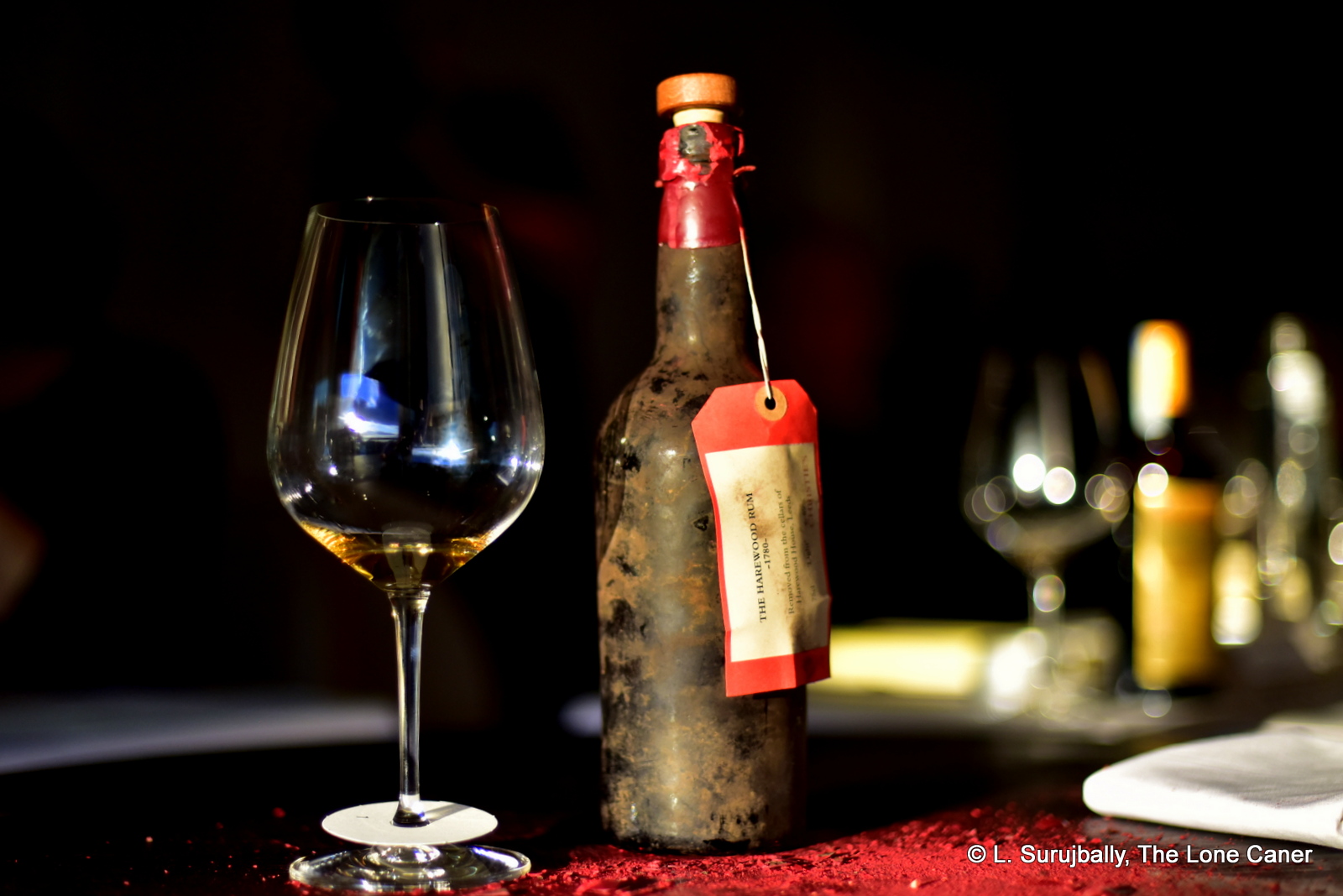


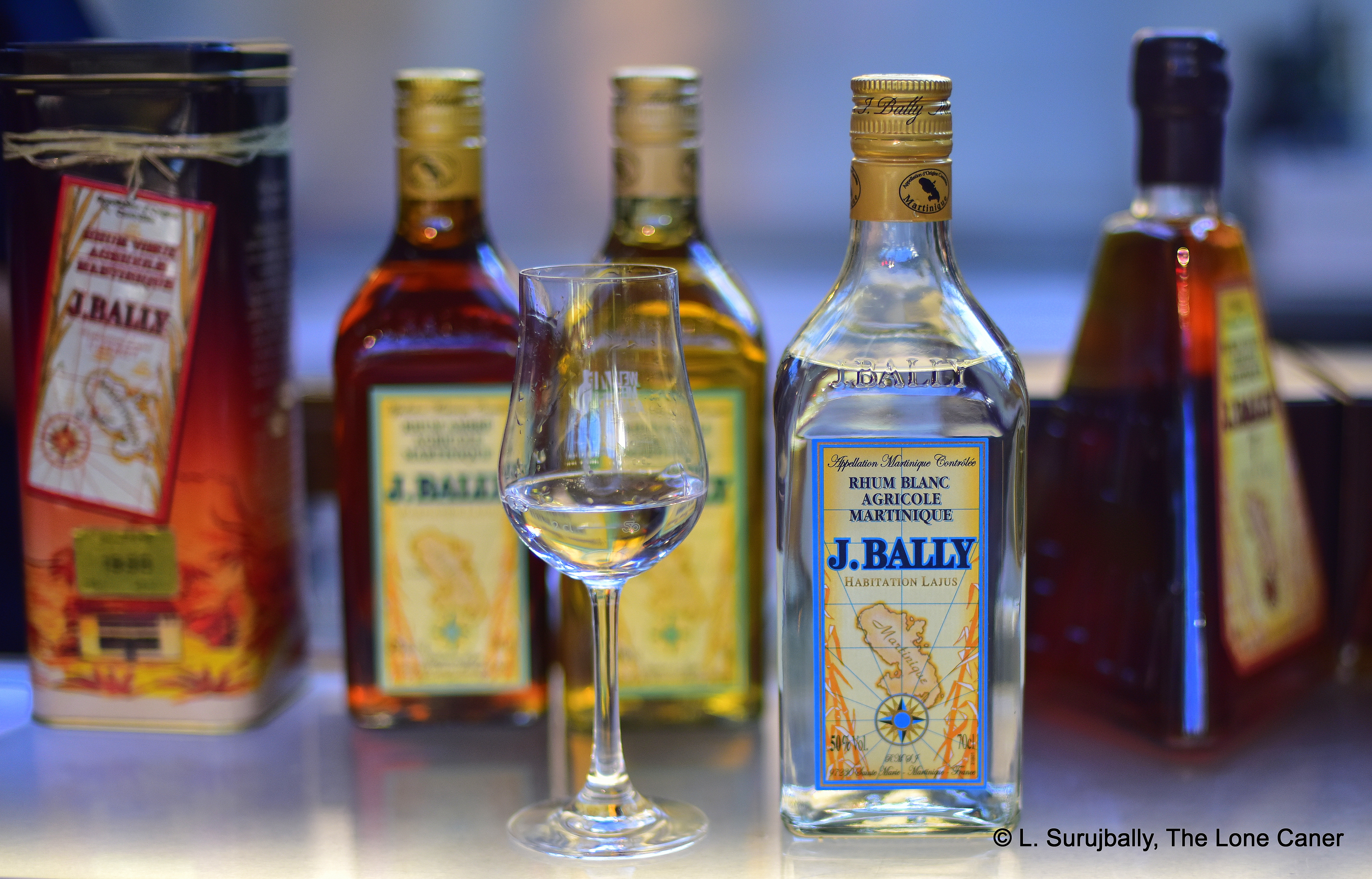
 Well, that out of the way, let me walk you through the profile. Nose first: what was immediately evident is that it adhered to all the markers of a crisp agricole. It gave off of light grassy notes, apples gone off the slightest bit, watermelon, very light citrus and flowers. Then it sat back for some minutes, before surging forward with more: olives in brine, watermelon juice, sugar cane sap, peaches, tobacco and a sly hint of herbs like dill and cardamom.
Well, that out of the way, let me walk you through the profile. Nose first: what was immediately evident is that it adhered to all the markers of a crisp agricole. It gave off of light grassy notes, apples gone off the slightest bit, watermelon, very light citrus and flowers. Then it sat back for some minutes, before surging forward with more: olives in brine, watermelon juice, sugar cane sap, peaches, tobacco and a sly hint of herbs like dill and cardamom.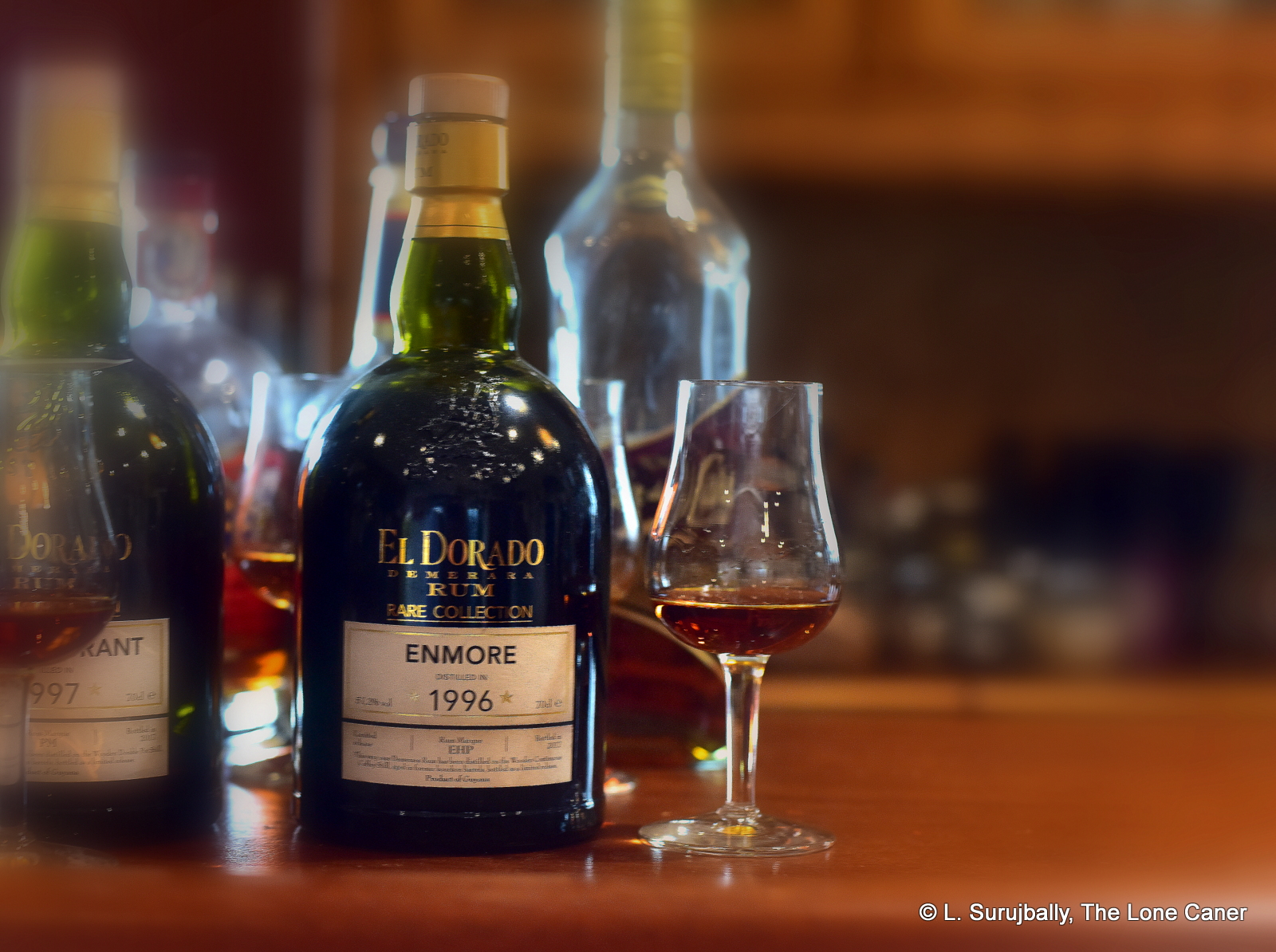

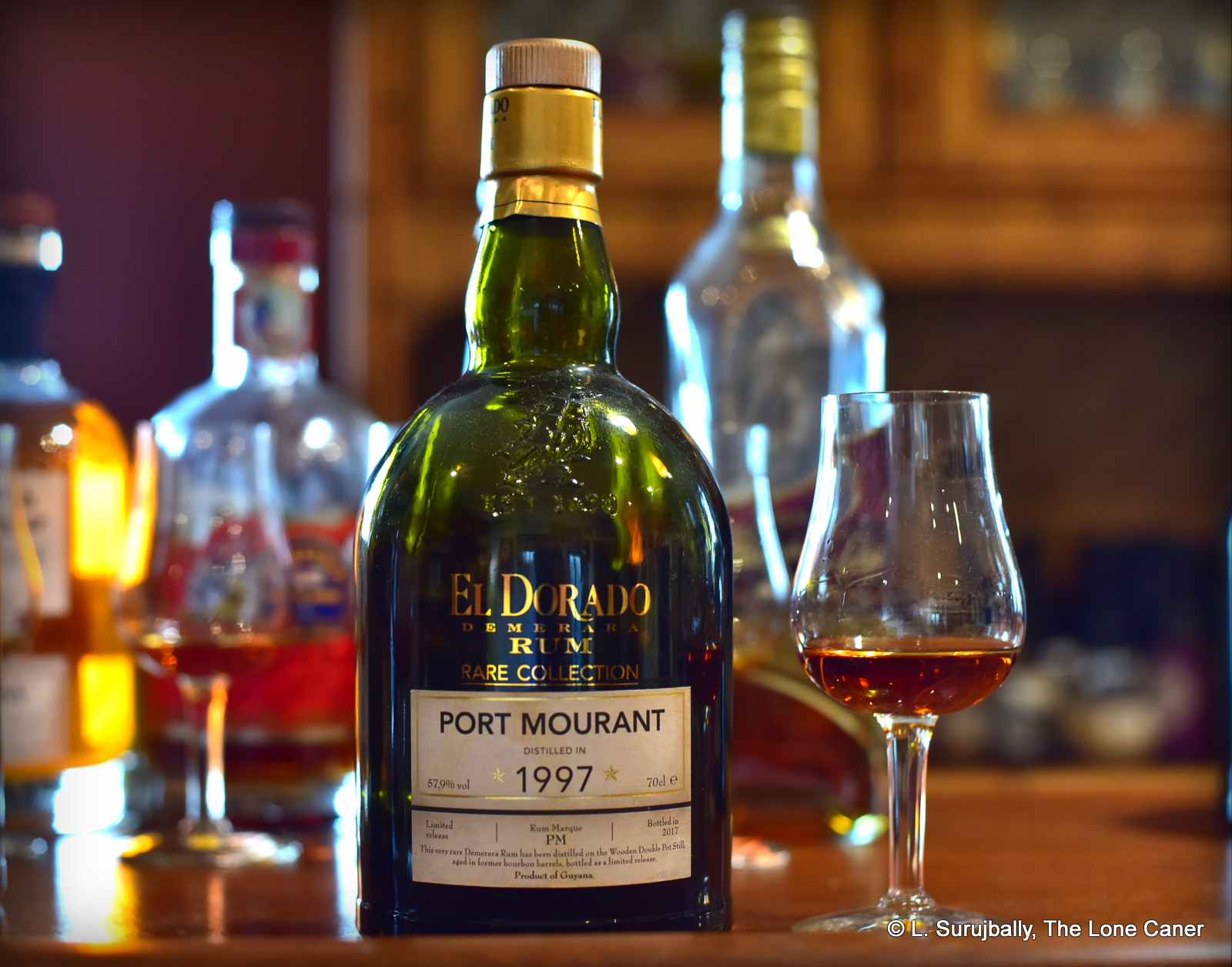
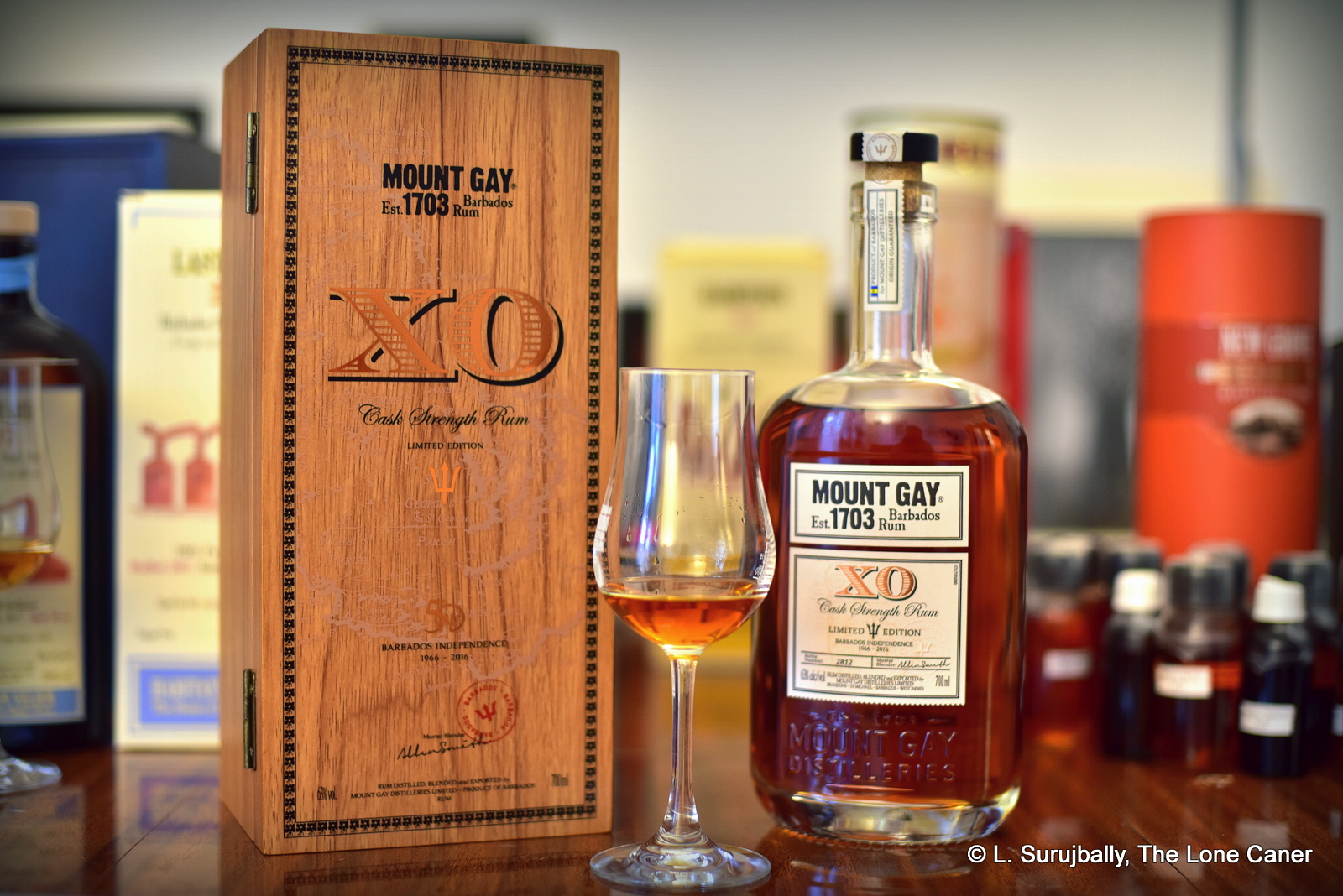
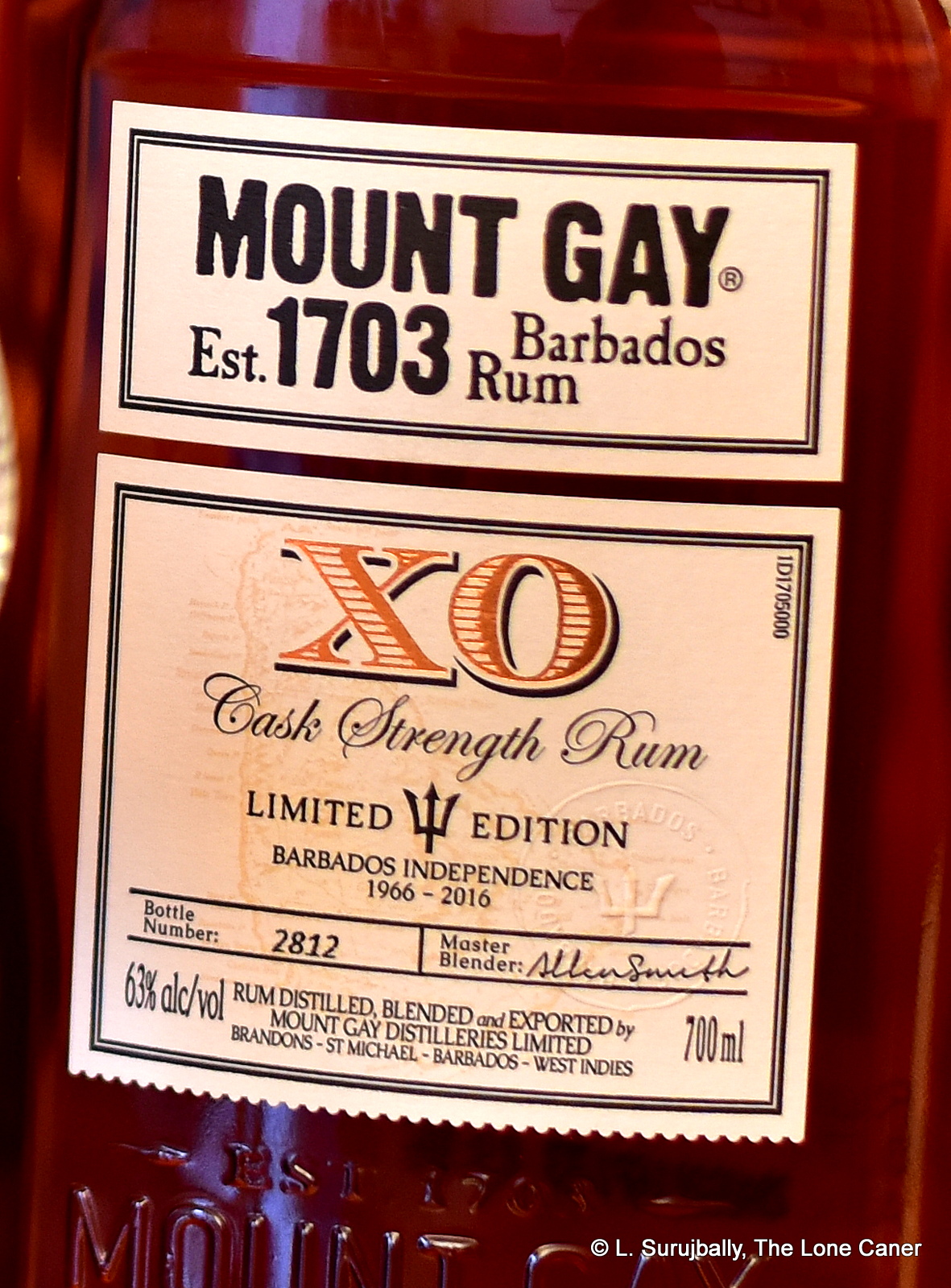 You can’t fault the presentation or the stats (though you might balk at the price). The ovoid bottle is nicely labelled with the bottle number and Allen Smith’s signature, comes in a handsome wooden box with a small booklet in it that speaks to the rum. It doesn’t state the outturn on the label, but it’s 3000 bottles, a rum to mark fifty years of independence though itself it is not that old, being a blend of pot and column still rums aged between 8-15 years old (just like the regular XO, even if one gets the impression that certain select barrels were chosen here). And of course the main selling point, the 63% ABV, Mount Gay’s first serious foray into these strong and dangerous rum currents.
You can’t fault the presentation or the stats (though you might balk at the price). The ovoid bottle is nicely labelled with the bottle number and Allen Smith’s signature, comes in a handsome wooden box with a small booklet in it that speaks to the rum. It doesn’t state the outturn on the label, but it’s 3000 bottles, a rum to mark fifty years of independence though itself it is not that old, being a blend of pot and column still rums aged between 8-15 years old (just like the regular XO, even if one gets the impression that certain select barrels were chosen here). And of course the main selling point, the 63% ABV, Mount Gay’s first serious foray into these strong and dangerous rum currents.
 Rumaniacs Review #083 | 0544
Rumaniacs Review #083 | 0544 Opinion
Opinion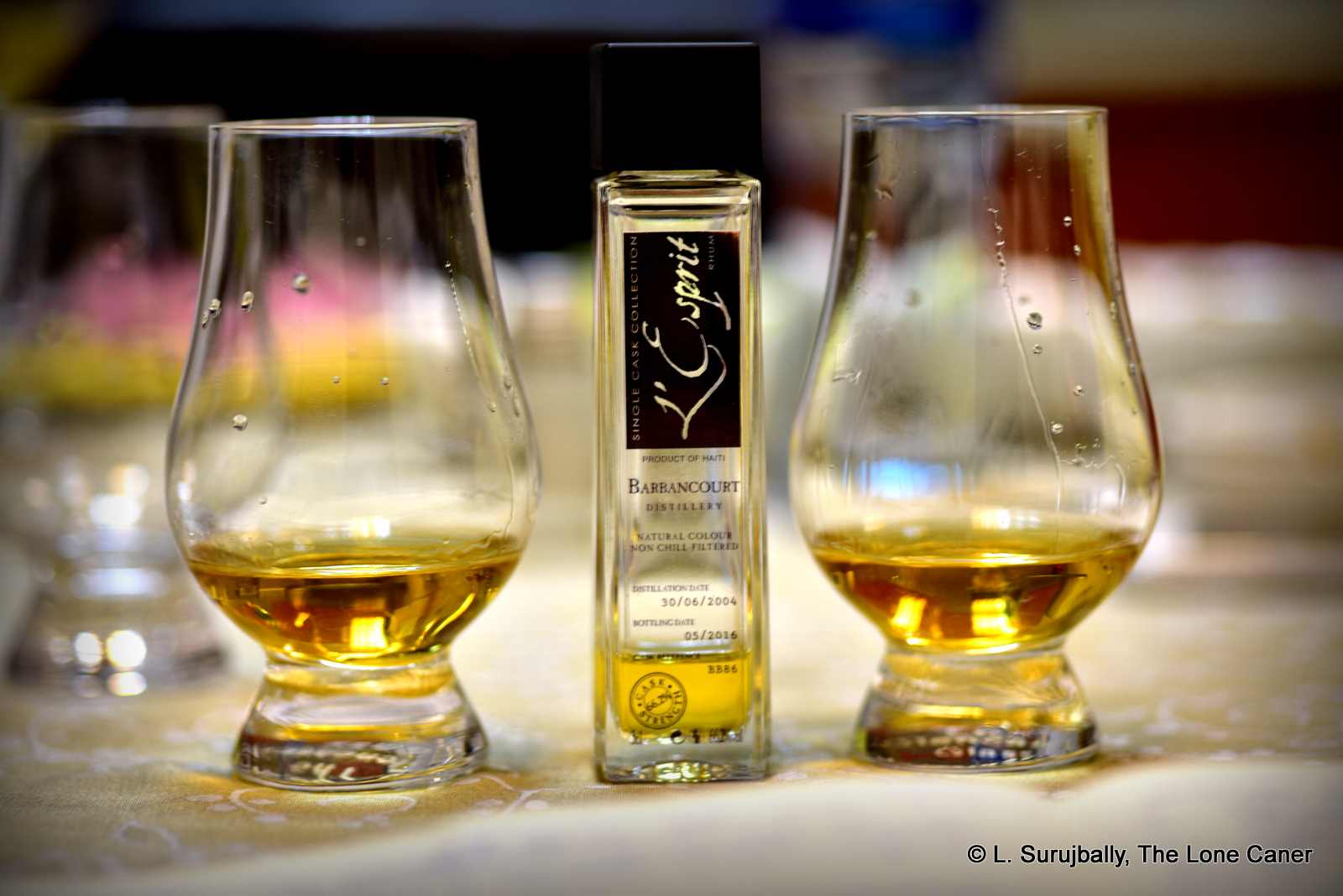
 The bare statistics are brief and as follows: column still product, continentally aged; distilled 2004 and released in 2016 at a brobdingnagian 66.2% (its lesser proofed twin which is quite similar is bottled at 46% and 228 bottles were issued but about the full proof edition here, I’m not certain – less, for sure, maybe a hundred or so). Pale yellow in colour and a massive codpiece of a nose, deep and intense, which should not present as a surprise at all. It was quite aromatic as well – one could sense bananas, vanilla, prunes and fruit, with a nice counterpoint of citrus to set these off. Like many rums released at cask strength, it rewarded patience because after a while back-end smells of cream cheese, dark bread, brine, olives, nail polish, plastic bubble wrap (freshly popped), paint became much more evident, though fortunately without taking over entirely
The bare statistics are brief and as follows: column still product, continentally aged; distilled 2004 and released in 2016 at a brobdingnagian 66.2% (its lesser proofed twin which is quite similar is bottled at 46% and 228 bottles were issued but about the full proof edition here, I’m not certain – less, for sure, maybe a hundred or so). Pale yellow in colour and a massive codpiece of a nose, deep and intense, which should not present as a surprise at all. It was quite aromatic as well – one could sense bananas, vanilla, prunes and fruit, with a nice counterpoint of citrus to set these off. Like many rums released at cask strength, it rewarded patience because after a while back-end smells of cream cheese, dark bread, brine, olives, nail polish, plastic bubble wrap (freshly popped), paint became much more evident, though fortunately without taking over entirely
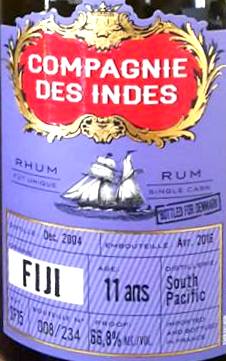 It was obvious after one tiny sniff, that not one percentage point of all that proofage was wasted and it was all hanging out there: approaching with caution was therefore recommended. I felt like I was inhaling a genetically enhanced rum worked over by a team of uber-geek scientists working in a buried government lab somewhere, who had evidently seen King Kong one too many times. I mean, okay, it wasn’t on par with the
It was obvious after one tiny sniff, that not one percentage point of all that proofage was wasted and it was all hanging out there: approaching with caution was therefore recommended. I felt like I was inhaling a genetically enhanced rum worked over by a team of uber-geek scientists working in a buried government lab somewhere, who had evidently seen King Kong one too many times. I mean, okay, it wasn’t on par with the 

 That said, the still which produced this pale yellow 57.19% ABV rum remains an open question, though my personal belief is that it’s a column still product. It certainly noses that way – aside from presenting as a fierce little young rum, it lacks something of the depth and pungency of a pot still spirit. However, that doesn’t matter, because it’s damn fine on its own merits – brine, olives, paint, turpentine, acetones, fresh nail polish, more brine and gherkins, and that’s just the beginning. It has aspects that are almost Jamaican, what with a bunch of prancing dancing esters jostling for attention, except that the smell is not so crisply sweet. It develops very nicely into smoke, leather, linseed oil for cricket bats, more brine and oily smoothness. Like a set of seething rapids finished with the messing around, it settles down to a much more refined state after half an hour or so.
That said, the still which produced this pale yellow 57.19% ABV rum remains an open question, though my personal belief is that it’s a column still product. It certainly noses that way – aside from presenting as a fierce little young rum, it lacks something of the depth and pungency of a pot still spirit. However, that doesn’t matter, because it’s damn fine on its own merits – brine, olives, paint, turpentine, acetones, fresh nail polish, more brine and gherkins, and that’s just the beginning. It has aspects that are almost Jamaican, what with a bunch of prancing dancing esters jostling for attention, except that the smell is not so crisply sweet. It develops very nicely into smoke, leather, linseed oil for cricket bats, more brine and oily smoothness. Like a set of seething rapids finished with the messing around, it settles down to a much more refined state after half an hour or so.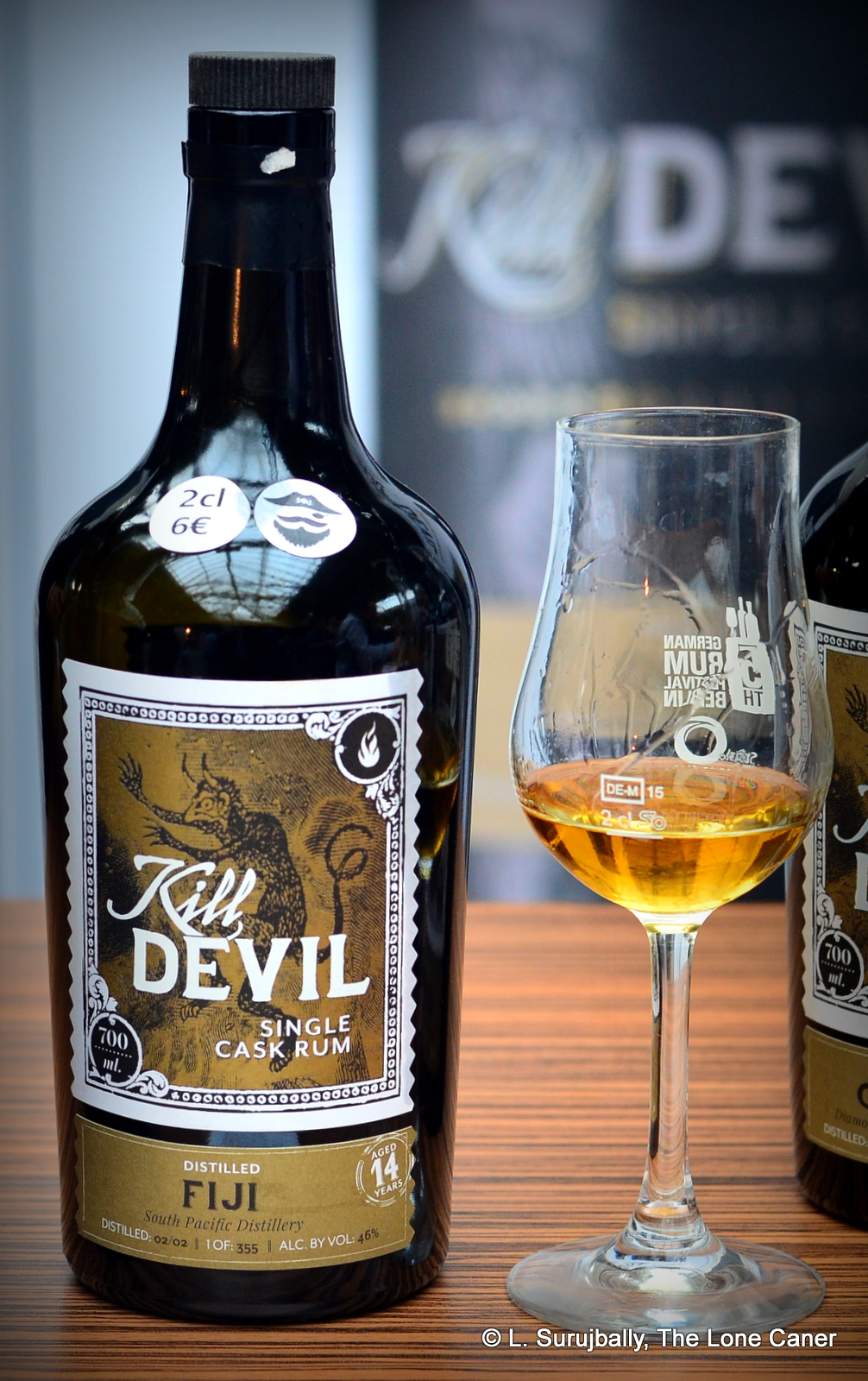 Kill Devil is the rum brand of the whiskey blender Hunter Laing, who’ve been around since 1949 when Frederick Laing founded a whisky blending company in Glasgow. In 2013 the company created an umbrella organization called Hunter Laing & Co, into which they folded all their various companies (like Edition Spirits and the Premier Bonding bottling company). The first rums they released to the market – with all the now-standard provisos like being unadulterated, unfiltered and 46% – arrived for consumers in 2016, which meant that this rum from the South Pacific Distillery on Fiji, was issued as part of their first batch (oddly, their own website provides no listing of their rums at all aside from boilerplate blurbs). When the time came for me to decide what to sample, the
Kill Devil is the rum brand of the whiskey blender Hunter Laing, who’ve been around since 1949 when Frederick Laing founded a whisky blending company in Glasgow. In 2013 the company created an umbrella organization called Hunter Laing & Co, into which they folded all their various companies (like Edition Spirits and the Premier Bonding bottling company). The first rums they released to the market – with all the now-standard provisos like being unadulterated, unfiltered and 46% – arrived for consumers in 2016, which meant that this rum from the South Pacific Distillery on Fiji, was issued as part of their first batch (oddly, their own website provides no listing of their rums at all aside from boilerplate blurbs). When the time came for me to decide what to sample, the 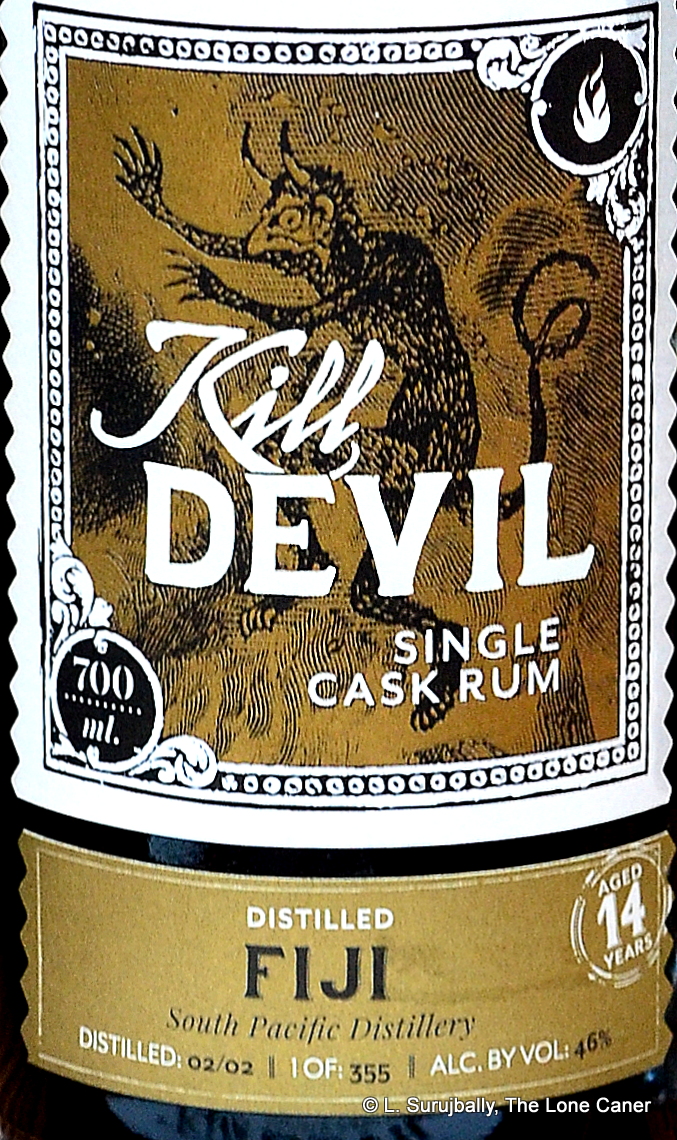 On the palate the fruits started to take over, tart and a unripe, like ginnips and soursop together with ripe mangoes, pineapple and cherries in syrup right out of a can – there was hardly any of the brininess from the nose carrying over, and as it developed, additional hints of pears, watermelon, honey, and pickled gherkins were clearly noticeable. It was warm and crisp at the same time, quite nice, and while the long and heated finish added nothing new to the whole experience, it didn’t lose any of the flavours either; and I was left thinking that while different from other Fijians for sure, it seemed to be channelling a sly note of Jamaican funk throughout, and that was far from unpleasant….though perhaps a bit at odds with the whole profile.
On the palate the fruits started to take over, tart and a unripe, like ginnips and soursop together with ripe mangoes, pineapple and cherries in syrup right out of a can – there was hardly any of the brininess from the nose carrying over, and as it developed, additional hints of pears, watermelon, honey, and pickled gherkins were clearly noticeable. It was warm and crisp at the same time, quite nice, and while the long and heated finish added nothing new to the whole experience, it didn’t lose any of the flavours either; and I was left thinking that while different from other Fijians for sure, it seemed to be channelling a sly note of Jamaican funk throughout, and that was far from unpleasant….though perhaps a bit at odds with the whole profile.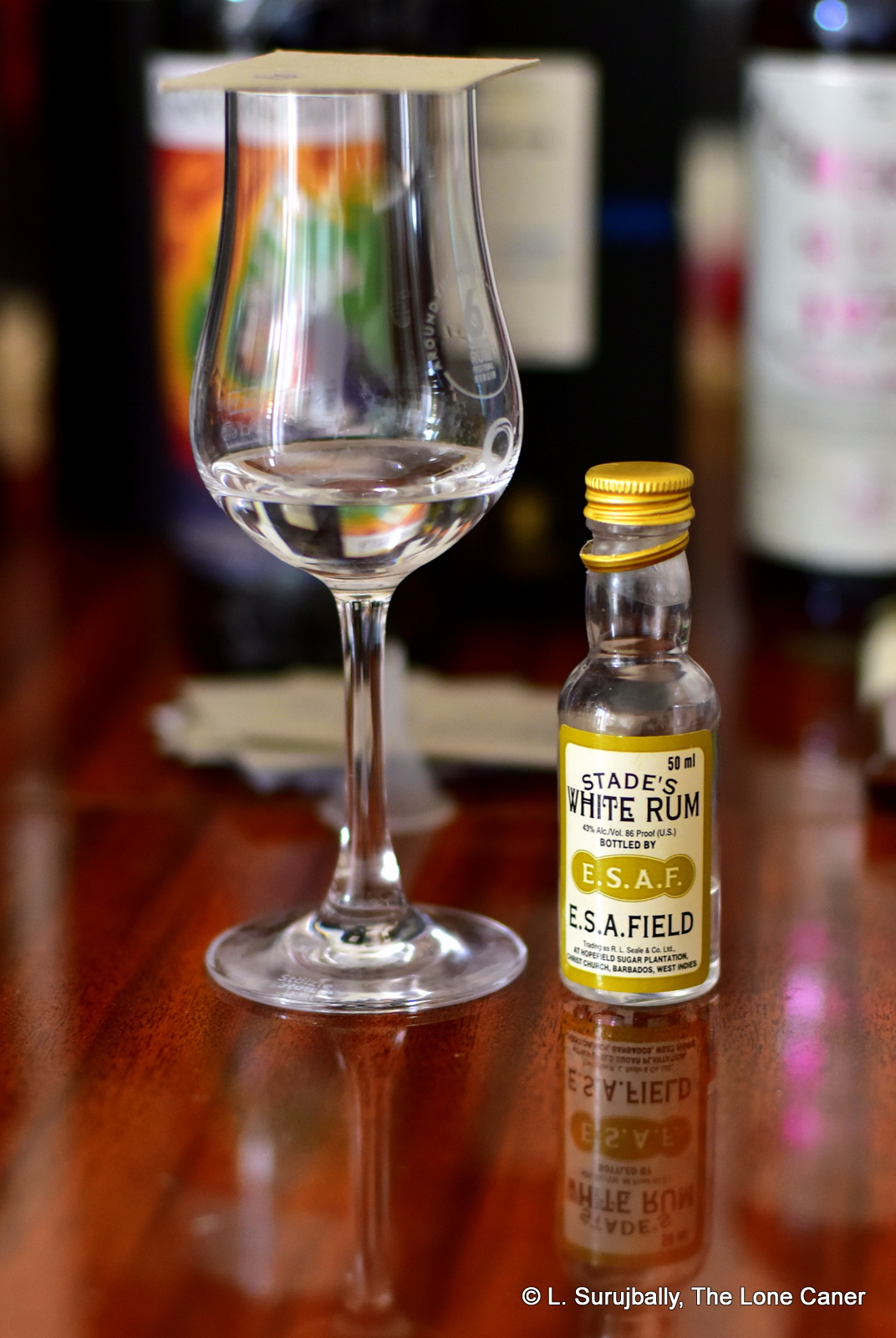

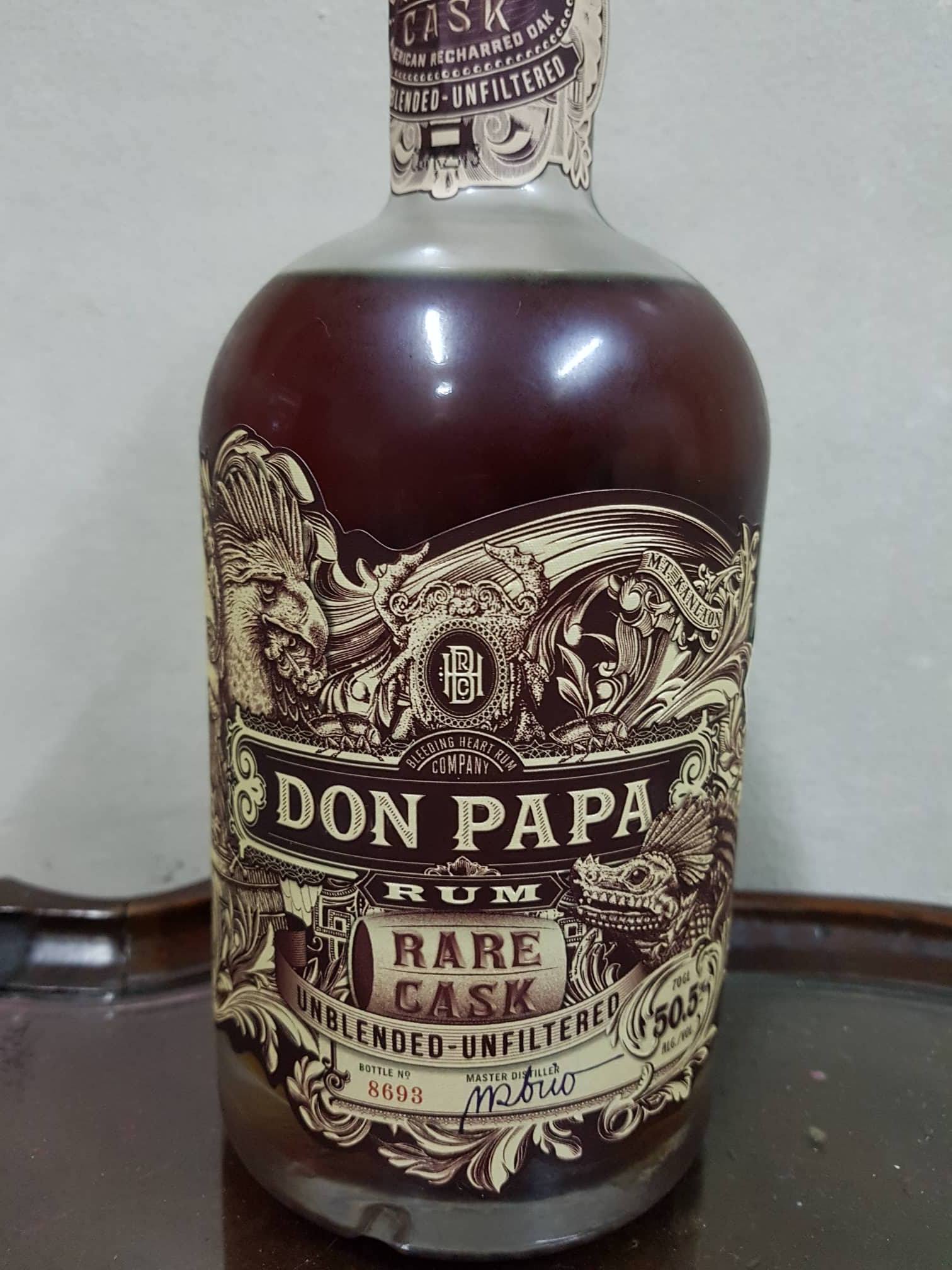
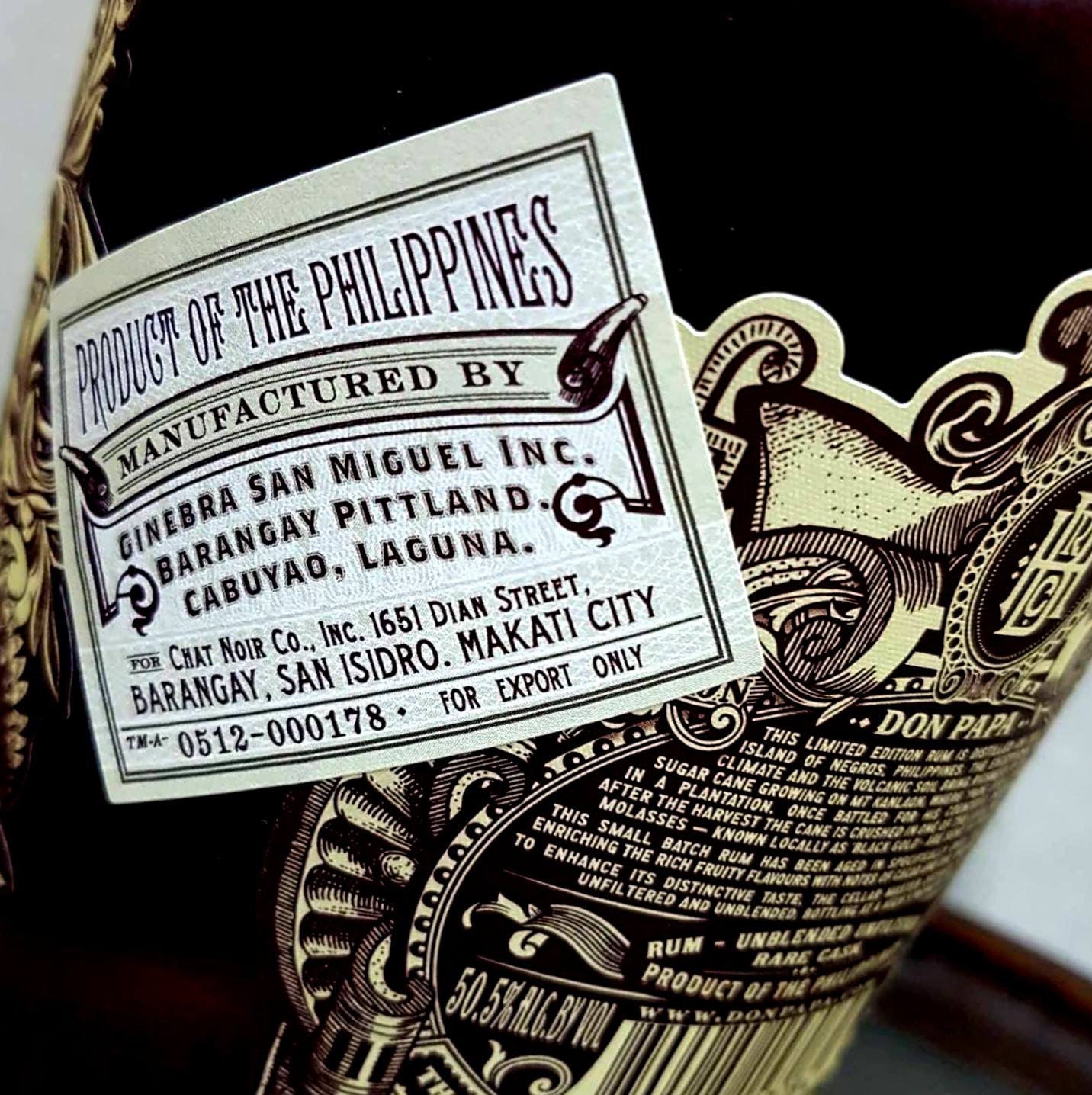

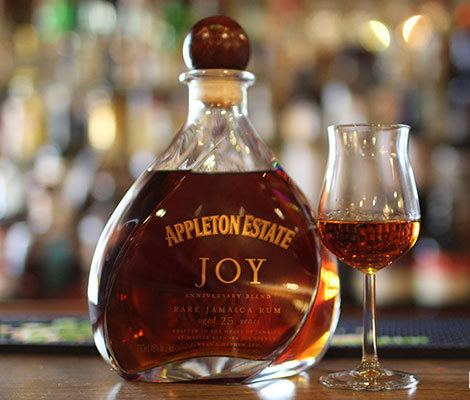
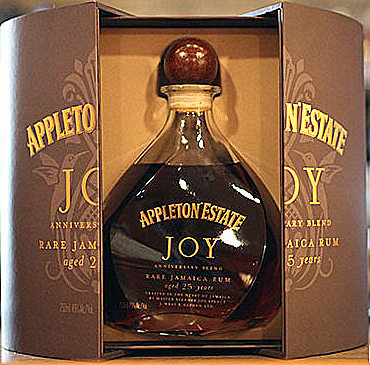

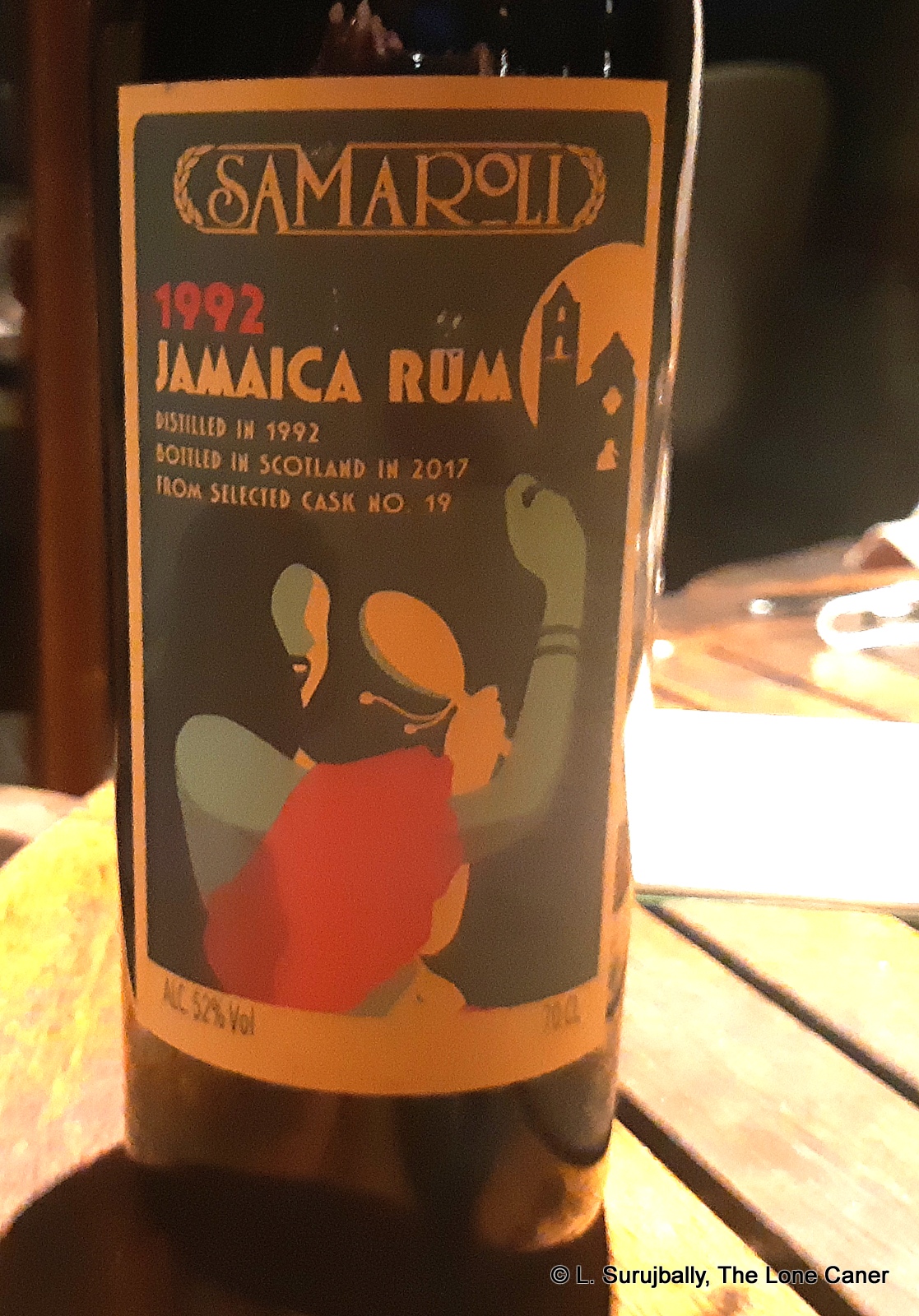 And the taste, the palate, the way it comes together, it’s masterful. At 52% it’s downright near damned perfect – the the balance between mouth puckering citrus plus laid back funk, and easier, softer flavours is unbelievably well done. Soda pop, honey, cereal, red currants, raspberries, fanta and orange zest dance exuberantly cross the tongue, never faltering, never allowing any one piece to dominate. Like an exquisitely choreographed dance number, the molasses, vanillas and fruits (peaches, yellow plums, pears, ripe yellow Thai mangoes) tango alongside sharper notes of citrus, lemon zest, overripe bananas, sandalwood and ginger. Even the finish is spectacular – just long enough, just sharp enough, just mellow enough, allowing each of the individually discerned flavours of fruits, toffee, chocolate and citrus to come out on stage one last time for a bow, before fading back and making way for the next one
And the taste, the palate, the way it comes together, it’s masterful. At 52% it’s downright near damned perfect – the the balance between mouth puckering citrus plus laid back funk, and easier, softer flavours is unbelievably well done. Soda pop, honey, cereal, red currants, raspberries, fanta and orange zest dance exuberantly cross the tongue, never faltering, never allowing any one piece to dominate. Like an exquisitely choreographed dance number, the molasses, vanillas and fruits (peaches, yellow plums, pears, ripe yellow Thai mangoes) tango alongside sharper notes of citrus, lemon zest, overripe bananas, sandalwood and ginger. Even the finish is spectacular – just long enough, just sharp enough, just mellow enough, allowing each of the individually discerned flavours of fruits, toffee, chocolate and citrus to come out on stage one last time for a bow, before fading back and making way for the next one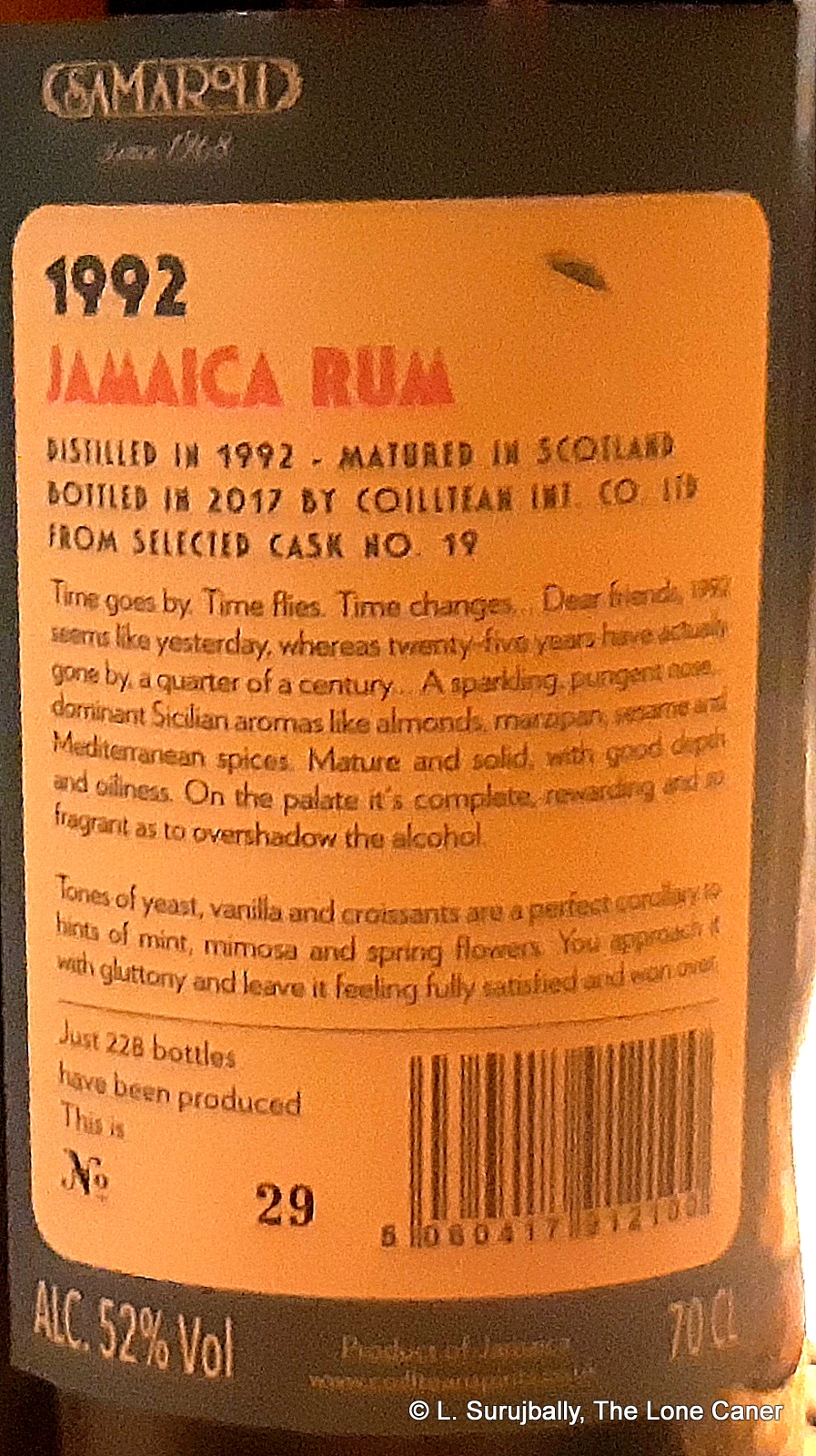 I don’t know what they did differently in this rum from others they’ve issued for the last forty years, what selection criteria they used, but
I don’t know what they did differently in this rum from others they’ve issued for the last forty years, what selection criteria they used, but 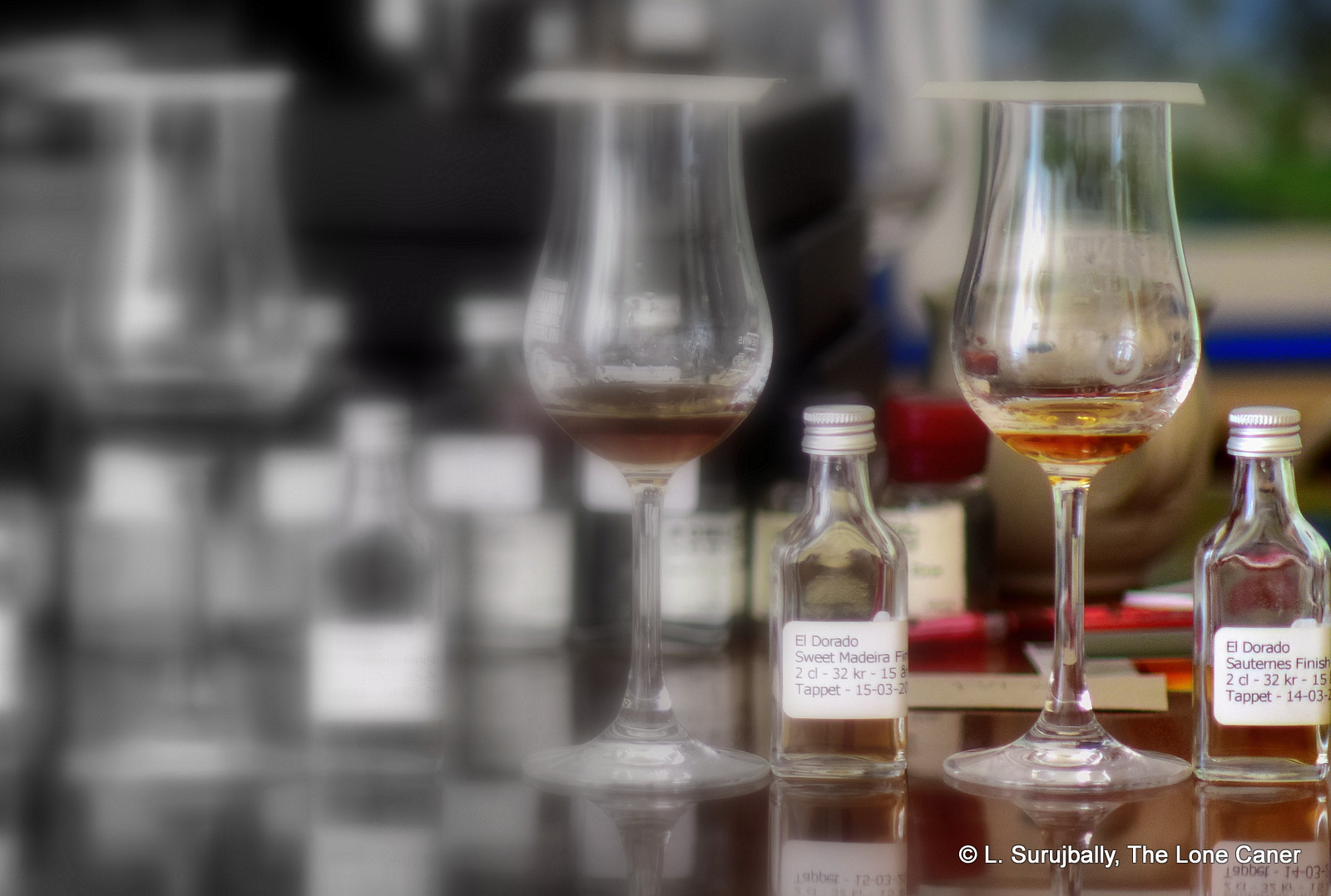
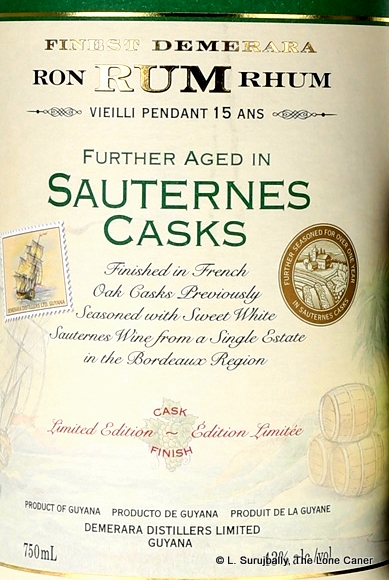 Nose – In a subtle way this is different from the others. It opens with aromatic tobacco, white almond-stuffed chocolate and nail polish before remembering what it’s supposed to be and retreating to the standard profile of salty caramel, molasses, vanilla, cherries, raisins, lemon peel and oak, quite a bit of oak, all rather sere.
Nose – In a subtle way this is different from the others. It opens with aromatic tobacco, white almond-stuffed chocolate and nail polish before remembering what it’s supposed to be and retreating to the standard profile of salty caramel, molasses, vanilla, cherries, raisins, lemon peel and oak, quite a bit of oak, all rather sere.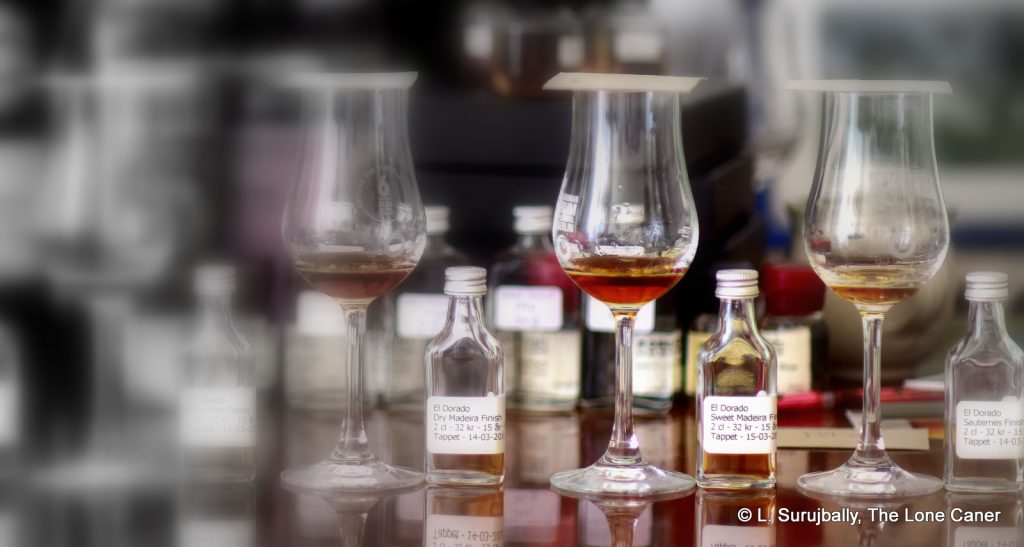
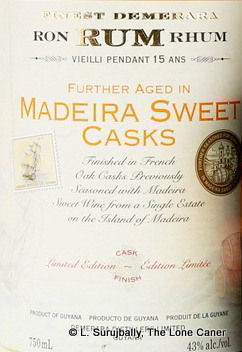 Nose – Leaving aside a slight sweetish note (which I suppose is to be expected, though still not entirely welcome), it noses relatively darker and richer and fruitier than just about all the others except the “Dry”…within the limits of its strength and mild adulteration. Peaches, raisins, cinnamon, cloves, caramel, peanut butter, cherries in syrup and candied oranges, even a little bitter chocolate. It’s all rather delicate, but quite pleasant.
Nose – Leaving aside a slight sweetish note (which I suppose is to be expected, though still not entirely welcome), it noses relatively darker and richer and fruitier than just about all the others except the “Dry”…within the limits of its strength and mild adulteration. Peaches, raisins, cinnamon, cloves, caramel, peanut butter, cherries in syrup and candied oranges, even a little bitter chocolate. It’s all rather delicate, but quite pleasant.